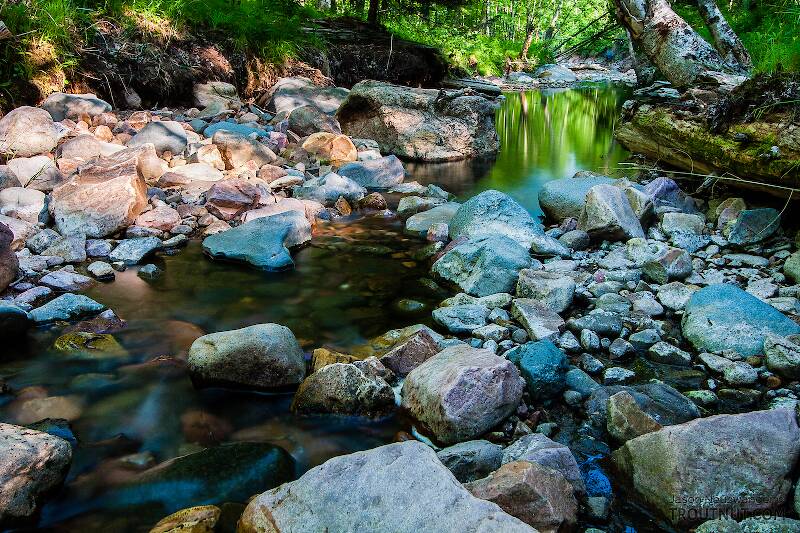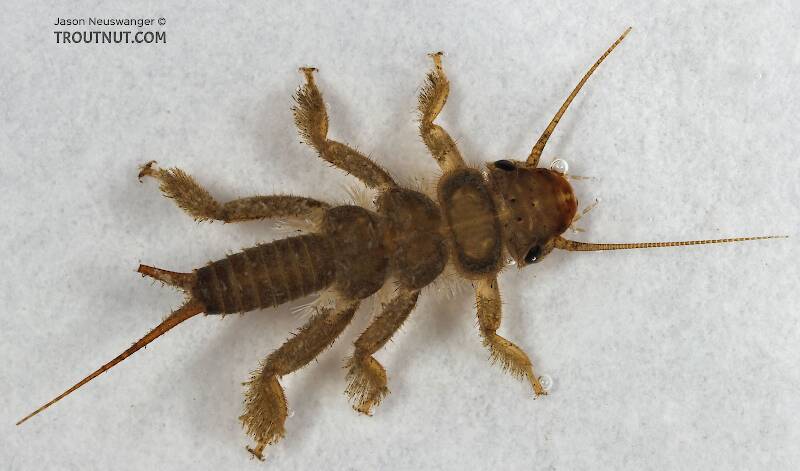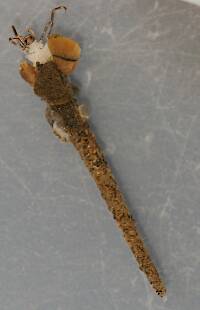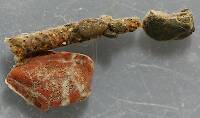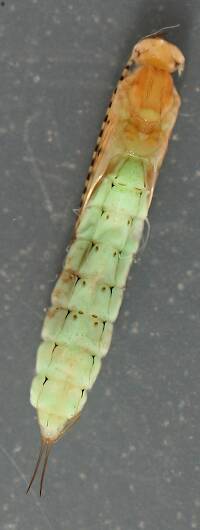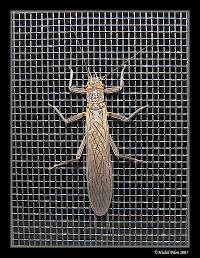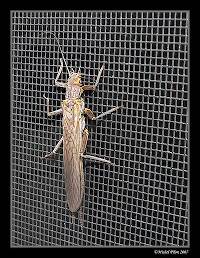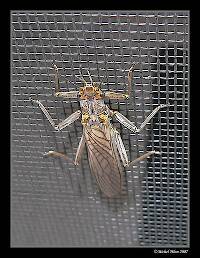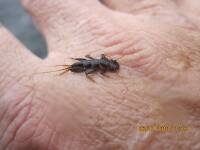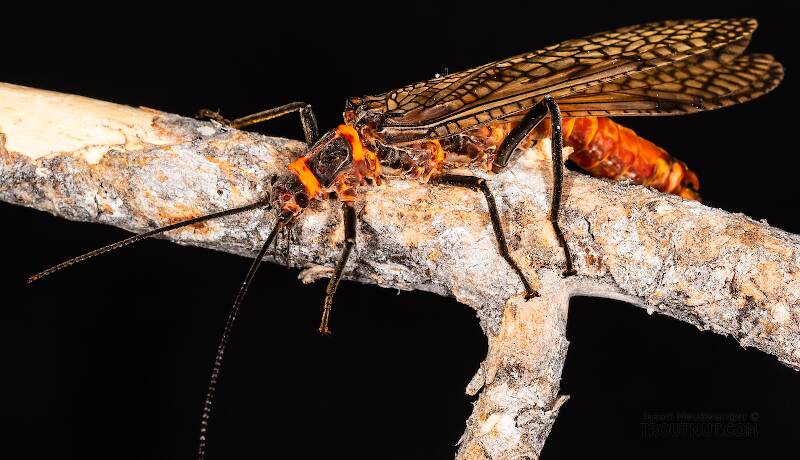
Salmonflies
Pteronarcys californica
The giant Salmonflies of the Western mountains are legendary for their proclivity to elicit consistent dry-fly action and ferocious strikes.
Featured on the forum
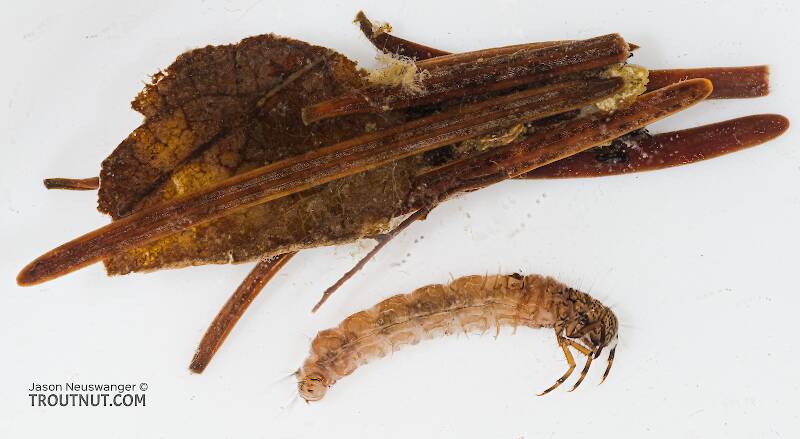
It's only barely visible in one of my pictures, but I confirmed under the microscope that this one has a prosternal horn and the antennae are mid-way between the eyes and front of the head capsule.
I'm calling this one Pycnopsyche, but it's a bit perplexing. It seems to key definitively to at least Couplet 8 of the Key to Genera of Limnephilidae Larvae. That narrows it down to three genera, and the case seems wrong for the other two. The case looks right for Pycnopsyche, and it fits one of the key characteristics: "Abdominal sternum II without chloride epithelium and abdominal segment IX with only single seta on each side of dorsal sclerite." However, the characteristic "metanotal sa1 sclerites not fused, although often contiguous" does not seem to fit well. Those sclerites sure look fused to me, although I can make out a thin groove in the touching halves in the anterior half under the microscope. Perhaps this is a regional variation.
The only species of Pycnopsyche documented in Washington state is Pycnopsyche guttifera, and the colors and markings around the head of this specimen seem to match very well a specimen of that species from Massachusetts on Bugguide. So I am placing it in that species for now.
Whatever species this is, I photographed another specimen of seemingly the same species from the same spot a couple months later.
I'm calling this one Pycnopsyche, but it's a bit perplexing. It seems to key definitively to at least Couplet 8 of the Key to Genera of Limnephilidae Larvae. That narrows it down to three genera, and the case seems wrong for the other two. The case looks right for Pycnopsyche, and it fits one of the key characteristics: "Abdominal sternum II without chloride epithelium and abdominal segment IX with only single seta on each side of dorsal sclerite." However, the characteristic "metanotal sa1 sclerites not fused, although often contiguous" does not seem to fit well. Those sclerites sure look fused to me, although I can make out a thin groove in the touching halves in the anterior half under the microscope. Perhaps this is a regional variation.
The only species of Pycnopsyche documented in Washington state is Pycnopsyche guttifera, and the colors and markings around the head of this specimen seem to match very well a specimen of that species from Massachusetts on Bugguide. So I am placing it in that species for now.
Whatever species this is, I photographed another specimen of seemingly the same species from the same spot a couple months later.

Troutnut is a project started in 2003 by salmonid ecologist Jason "Troutnut" Neuswanger to help anglers and
fly tyers unabashedly embrace the entomological side of the sport. Learn more about Troutnut or
support the project for an enhanced experience here.
GONZO on Oct 4, 2006October 4th, 2006, 10:01 am EDT
The row of spinules, absence of anal gills, and overall hairiness are all consistent with immature P. media. (The mature nymphs are cleaner, darker, and less hairy.)
I would also suggest altering the Paragnetina page to say that media is very important in both the East and Midwest. (media is probably the most widespread and commonly encountered large member of the Perlidae in the East. Due to its tolerance and adaptability it is often found in streams that have few other stonefly species.) The "accepted" (Stark, et al.) common names are Embossed Stone for media and Beautiful Stone for immarginata.
I would also suggest altering the Paragnetina page to say that media is very important in both the East and Midwest. (media is probably the most widespread and commonly encountered large member of the Perlidae in the East. Due to its tolerance and adaptability it is often found in streams that have few other stonefly species.) The "accepted" (Stark, et al.) common names are Embossed Stone for media and Beautiful Stone for immarginata.
Troutnut on Oct 4, 2006October 4th, 2006, 10:19 am EDT
Thanks. I've made the suggested changes.
Jason Neuswanger, Ph.D.
Troutnut and salmonid ecologist
Troutnut and salmonid ecologist
Dkak
Posts: 1
Posts: 1
Dkak on Jan 19, 2010January 19th, 2010, 4:37 am EST
I'm working with some of these "hairy" Paragnetina from Vermont right now. I've found them difficult to key out because their gills are only somewhat branched, ocelli are difficult to see on many individuals, and the inner fringe of long hairs on the cerci is not present (probably due to immaturity). These pictures helped a bunch!
Quick Reply
Related Discussions
Topic
Replies
Last Reply
4
Mar 11, 2012
by Entoman
by Entoman
2
Feb 6, 2017
by Crepuscular
by Crepuscular

